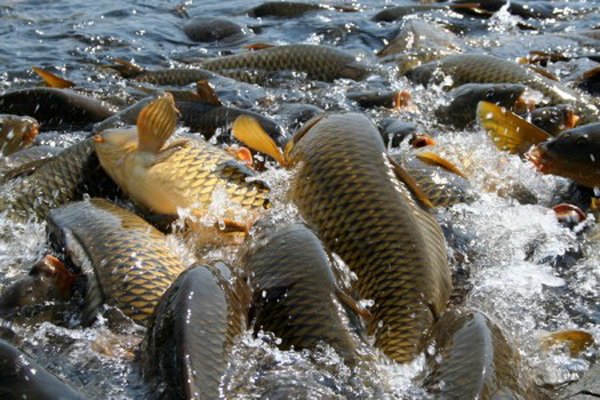In the human diet must necessarily be present such a product as fish. You can buy it in any store or on the market, but you can also grow it yourself: Of all freshwater fish species, a relative of wild river carp is the most beneficial breeding carp.. It is about how to breed this fish in the backyard in small ponds or pools and will be discussed in this article.
Table of contents
Advantages and disadvantages of breeding carps
Independent cultivation of carp has both its advantages and disadvantages.
Benefits:
- Fast growth - unlike other members of its family, this cultural species is growing very rapidly, reaching weight up to 400-500 grams by the end of the first year. At the end of the second year, the fish is able to achieve a commercial weight of 1 kg.
- Simplicity - carp is not so whimsical about the content of oxygen in the water like most river freshwater fish.
- High quality meat - it is soft, tasty and has a relatively small amount of small bones in this fish.
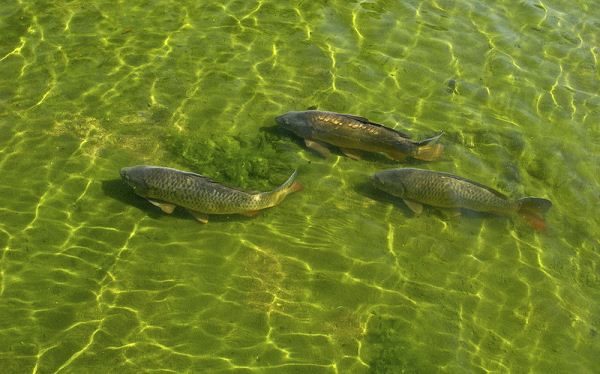
Disadvantages:
- Frequent morbidity fish with a very dense population of capacity
- Initial costs for the purchase of fry and device pool is quite high
Breeding technology at home
Purchase of fry
Buy fry should only in specialized fish farms having a good reputation and working for quite some time.
It is better to transport the purchased fry in spacious buckets or fishing channels. Water is better to take from a pond or lake in extreme cases - rain.
Catering - what and how to feed
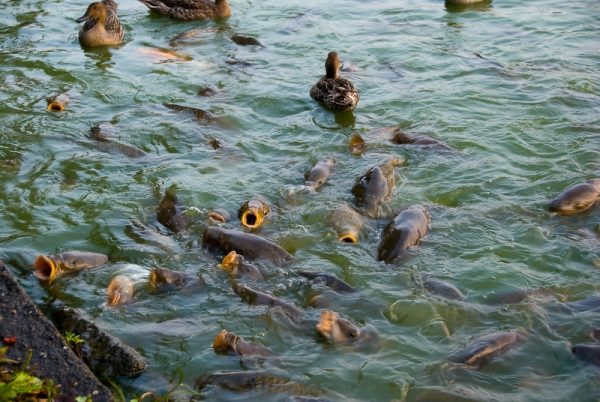
Feed started carp should be twice a day:
- Early in the morning - when the sun rose and warmed up enough water
- In the eveningbefore sunset
It is better to use as feed:
- Finely chopped rain worms
- Aft bloodworms
- Larvae caddis
- Steamed cereals - oats, wheat, barley
- Bread rye
In order for all kinds of bottom microorganisms to be present in the basin, small crustaceans with which the carp feeds on it, it is necessary to periodically add water from a nearby pond or lake. It is also necessary to periodically feed fish with special compound feeds.
In order to periodically catch the largest copies feed the fish in the same place making it a small tray in which the feed will fall asleep
Food should be filled up in small portions so that it is completely eaten by fish and not dropped to the bottom of the tank, rotting there over time and causing a deterioration in water quality.
Running the fish into the pool
Run the fry should be bought either in spring or autumn.
It is necessary to start fry in spring when water warmed to temperature 22-25 0WITH.
Conditions of detention and cultivation
Pool location and size
You can either buy a ready-made plastic pool, or pour it yourself.
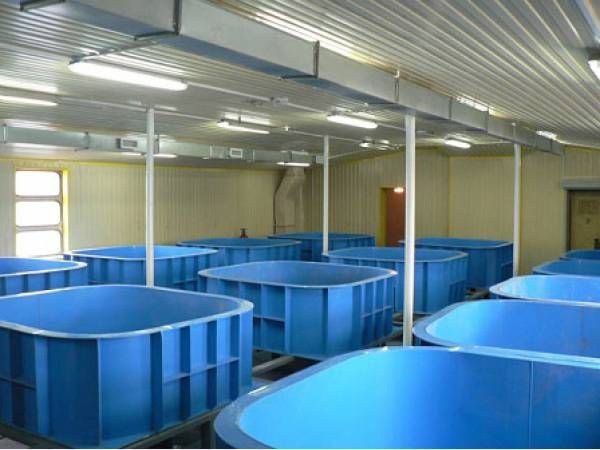
The most convenient for growing carp on the plot or cottage is a round container of plastic or polypropylene with a diameter of 2 to 3 meters and a depth of at least 1.2-1.5 meters.
It is better to have a container in such a way that a part of it would be illuminated most of the day in the summer by the sun, while the other would be in the shade.Such an arrangement will help to avoid overheating of the water and allow the fish in the heat to take refuge in the cool shade.
Also pools can be located in frame greenhouses or garage.
Water quality
Water in the pool should be updated. For this, the following system is mounted:
- Filter with pump drawing water from a nearby stream or small river
- PE pipe attached to the pump and supplying water to the tank
- Drain line from a polyethylene pipe of bigger diameter than the giving. They have a drain line at the bottom of the tank and output it to a stream or river, installing a tap or cap at the end
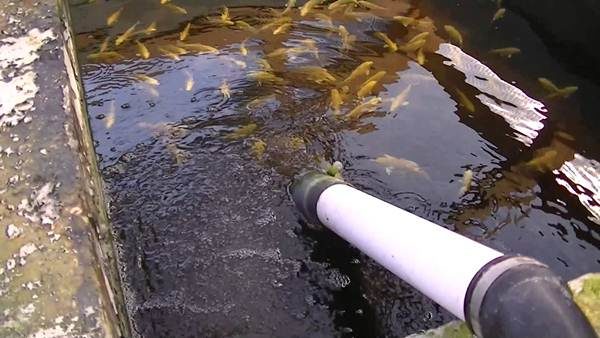
If there is no river or a stream nearby, then it is necessary to use water from a well that is pumped into the pool by a submersible filter pump. Water should then be drained through a filter into the sewer system.
Temperature
Water in the pool during the growth and development of fish should warm to a temperature of at least 22-25 0WITH, but not more than 30 0WITH.
Such a temperature background is achieved by placing the tank in a sunny place and periodically replacing (draining) a part of the water.
Oxygen content
Although carp is unpretentious to the content of dissolved oxygen in water, its A deficiency can lead to a slowdown in growth or complete death of the entire population.
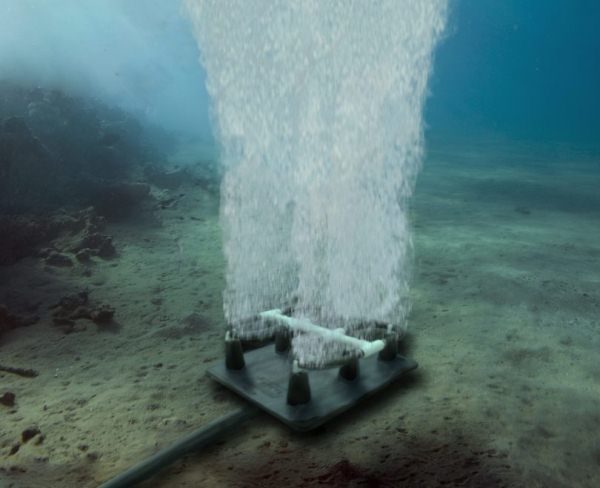
To increase the oxygen content should use special aerators or compressors of small capacity.
Breeding
Reproduction carp process is quite laborious. When it comes to catching 2-3 year old fish in the fall, it is necessary to leave several large heterosexual individuals in the tank so that they spawn in spring:
- In order for the carp to multiply make two separate ponds spawning and nursery. Spawning should be 3 × 3 meters in size with a depth of no more than 0.5 meters. Vyrostnoy pond should be slightly larger in area and depth. Its optimal size is a square with a side length of 4 meters and a depth of 1.5 meters.
- In the ponds need provide fresh water supply system from a river or stream, well, as well as its discharge
- In early spring when warming up water to 18-20 0From the spawning pond you must first transplant 1-2 males in the afternoon, and closer to the evening - 1 female
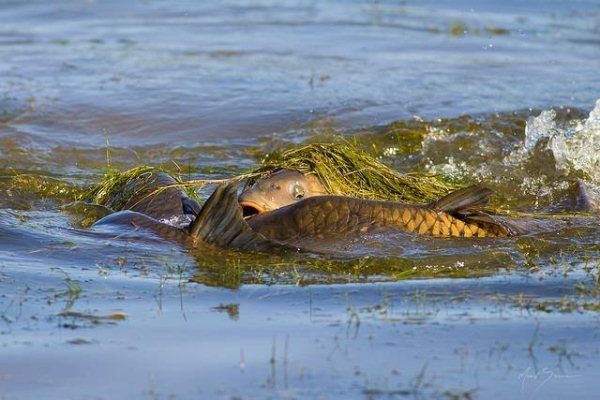
- In order for females to lay their eggs at the pond in advance, shake with reed or cattailor place freshly cut meadow sod on the bottom
- After fertilized larvae hatch, large carp must be returned to the pool
- Later 6-8 days the spawning pond should be lowered, and the larvae should be fished out with a fine-mesh net and transplanted into the nursery pond
- In the nursery pond the larvae should be fed with small bloodworms, special feed, powdered milk
- Before winter, the nursery pond must be pulled down., and grown fry weighing 15-20 grams. transplanted into a pool or a volume home aquarium
What to do in the winter with a carp in the pond
- In winter, dug into the ground or solid concrete pool carp can winterize under the condition the fact that the tank does not freeze to the bottom and enough oxygen will get into it
- In order for the container not to freeze after the ice cover sufficiently durable for walking is formed on it cover with a large layer of snow in the absence of such - mats insulation and film, providing space for drilling holes
- In order for oxygen to get into the pool in its ice cover by ice-fishing need to make a few holes and make sure that they do not freeze
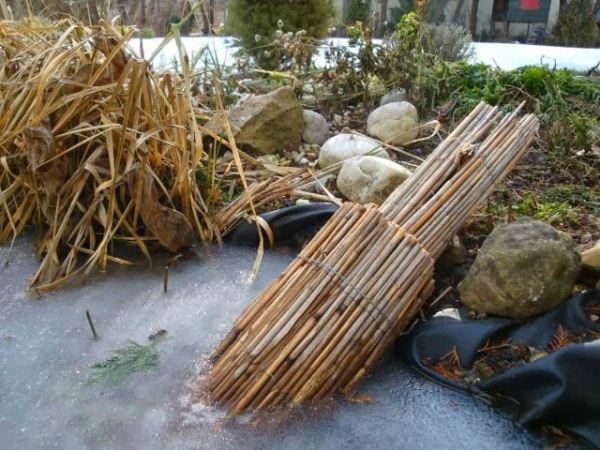
- If the container is located indoors or in a greenhouse, then for winter feeding carp should be reduced, make feed according to fish activity
Business payback for beginners
Breeding carp is not only an opportunity to always have fresh self-grown fish, but also quite profitable business. Let's try to calculate its approximate profitability.
Costs
- Pool from polypropylene of 2,7 m3- 26 000 rubles.
- Malek –3000 rub. (500 pieces) full capacity
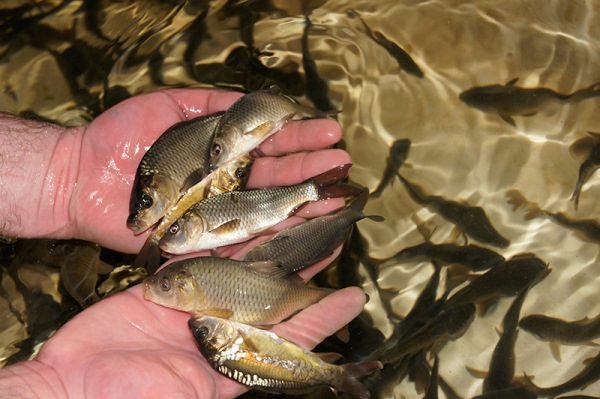
- Feed - Purchased feed at a rate of 1 bag per month and the duration of feeding minus autumn and winter from May to September (5 months), the cost of purchasing it at the cost of one bag weighing 40 kg in 640 rubles. two years will amount to 6400 rubles.
The total amount of all expenses is 35 400 rub.
Profit
- Taking into account the population density of a tank of a given size not less than 200 year old fry per 1 m3 and the percentage of their deaths in the first year with normal feeding of no more than 5% in the second year in the pool can grow around 500 carp weighing about 1 kg - 500 kg of fish
- A carp of commercial weight of 1 kg has an average cost of about 130 rubles - selling all grown fish will bring 65 000 rub.
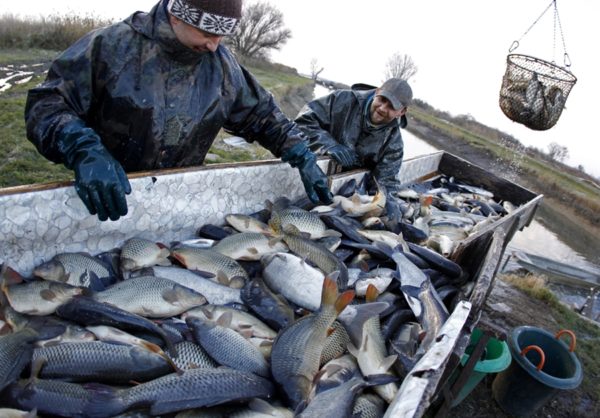
- Excluding all expenses equal to 35,400 rubles. profit is 29 600 rub., and the estimated profitability of growing carp at home is:
Profitability = (Profit / Expense) × 100 = (29 600/35 400) × 100 = 83.6%
Growing carp in the backyard area can be not only a good hobby, but also a fairly profitable business, even for a novice fish farmer.
